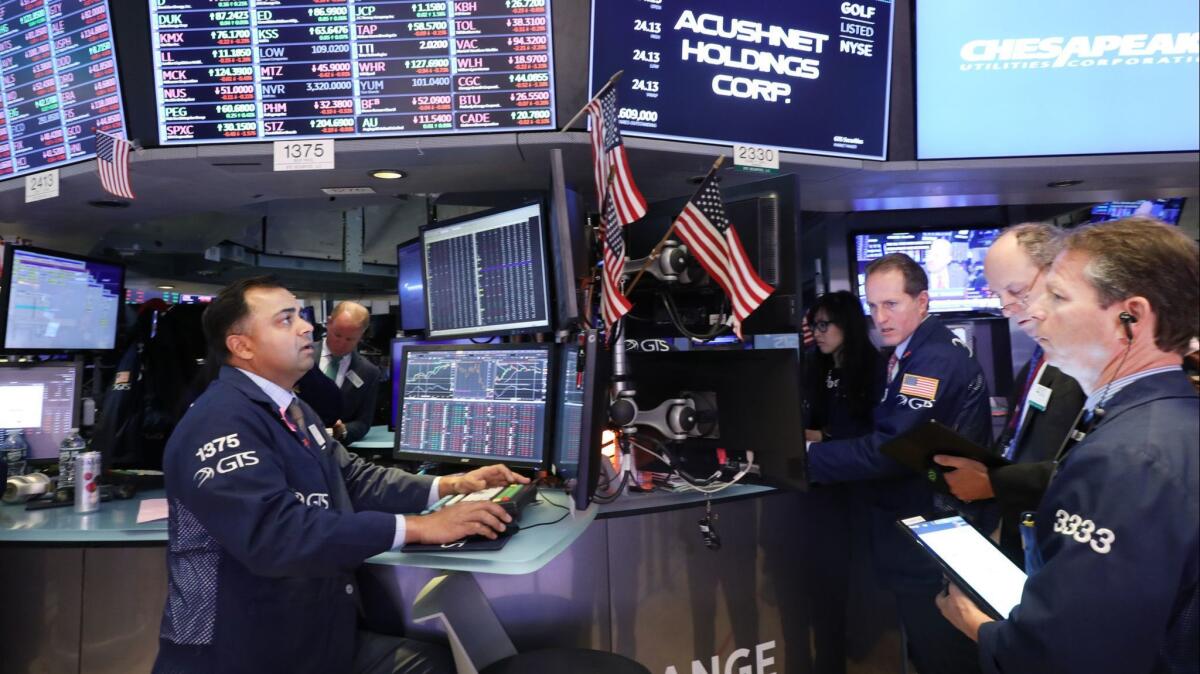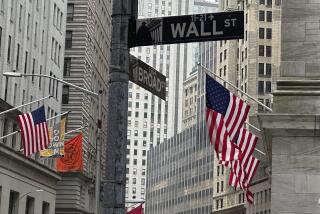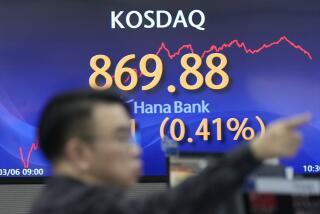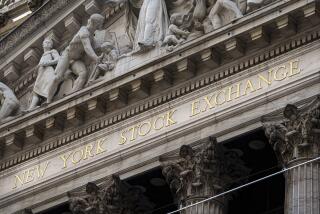Market snaps losing streak after government eases threat on China tech sales

Technology companies helped power stocks broadly higher on Wall Street on Tuesday, snapping the market’s two-day losing streak.
The rally followed the U.S. government’s decision to temporarily ease proposed restrictions on technology sales to Chinese companies. The news gave a boost to technology-sector stocks, which took steep losses a day earlier when the Trump administration announced curbs on technology sales, aimed primarily at Chinese telecom gear maker Huawei.
About one-third of that company’s suppliers are U.S. chipmakers, and the move would crimp sales for companies including Qualcomm and Broadcom. Both companies posted gains Tuesday, along with other chipmakers.
The U.S. government’s decision to issue a 90-day grace period on technology sales to Huawei, ZTE and other Chinese companies also relieved worries on Wall Street about yet another escalation in the trade war between the U.S. and China.
“I’m a bit surprised that the bounce back has been as strong as it has been,” said Randy Frederick, vice president of trading & derivatives at Charles Schwab. “It speaks to the fact that we’re still in a bull market and, in general, the economics are still pretty solid, and the markets are happy to move up on any sort of positive news, especially if it looks constructive toward trade.”
The Standard & Poor’s 500 index rose 24.13 points, or 0.9%, to 2,864.36. The Dow Jones industrial average gained 197.43 points, or 0.8%, to 25,877.33.
The technology heavy Nasdaq composite climbed 83.35 points, or 1.1%, to 7,785.72, erasing a good chunk of Monday’s losses. The Russell 2000 index of small companies picked up 20.28 points, or 1.3%, to 1,545.25.
Major stock indexes in Europe rose.
Bond prices fell, boosting the yield on the 10-year Treasury to 2.43% from 2.41% late Monday.
Heightened tensions over trade have stuck the market in a rut for the last two weeks — the S&P 500 is down 2.8% for May, although the benchmark index still shows a gain of 14.3% for the year.
The trend is a change from the relative calm that dominated markets earlier this year, when a trade agreement seemed to be in the works. The S&P 500 has twice dropped by at least 1.5% this month, as many times as it had in the first four months of the year.
“The trade negotiation with China is pretty much the big elephant in the room and continues to be,” Frederick said. “Which is why we’re going to continue to see above-average volatility like we’ve seen for the last two weeks, and it’s a kind of treacherous spot for people to be in right now.”
The dispute between Washington and Beijing grew more heated the last two weeks after the Trump administration made good on a threat to raise tariffs on Chinese-made products and China retaliated with tariffs of its own.
The U.S. government’s restrictions on technology sales to Huawei added more anxiety for traders already worried about further escalations in the trade dispute.
But the temporary delay on the restriction of sales to Huawei announced Tuesday, as well as the government saying that the 90-day grace period could be renewed, appeared to alleviate some of those concerns.
The rally particularly benefited chipmakers, which had slumped Monday.
Intel rose 2.1%, and Texas Instruments added 2.2%. Broadcom, which gets about half of its revenue from China, gained 1%. Qualcomm, which gets more than half of its revenue from China, rose 1.5%.
Technology stocks, especially chipmakers, have already been under increased pressure because of the ongoing trade war. The latest move to restrict some technology sales could cut into key revenue sources.
Apple rebounded 1.9% after falling a day earlier. Healthcare, financial and industrial stocks also helped drive the market higher Tuesday. Anthem climbed 4%, Wells Fargo added 1.9% and Boeing gained 1.7%. Household goods makers lagged. Tyson Foods slid 1.5%.
Gains in consumer-oriented stocks were held back by disappointing quarterly financial results from a couple of big department store chains.
J.C. Penney slid 7% after it reported declining sales and a surprisingly wide loss. The retailer attributed part of the weak quarter to its no longer selling major appliances and furniture.
Kohl’s plunged 12.3% after its results fell short of forecasts amid slumping sales. The company also cut its profit forecast for the year.
The latest corporate results nearly cap an earnings season that has been better than the severe earnings recession that Wall Street initially feared.
Energy futures finished mixed Tuesday. Benchmark U.S. crude slipped 0.2% to $62.99 a barrel. Brent crude, the international standard, rose 0.3% to $72.18 a barrel.
Wholesale gasoline gained 0.5% to $2.02 a gallon. Heating oil rose 0.3% to $2.08 a gallon. Natural gas fell 2.2% to $2.61 per 1,000 cubic feet.
Gold slid 0.3% to $1,273.20 an ounce, silver dropped 0.2% to $14.41 an ounce and copper gave up 0.4% to $2.72 a pound.
The dollar rose to 110.63 Japanese yen from 109.96 yen Monday. The euro weakened to $1.1158 from $1.1168.






